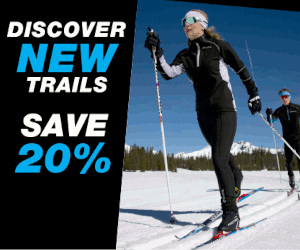August 05, 2016 – Monique Sullivan started bike racing at the age of 12, and chased her Olympic dream for the next 11 years. It wasn’t easy. At the age of 23 the hard work paid off and Monique proudly joined Team Canada at the 2012 Summer Olympics in London, England. Against the best track cyclists in the world, she finished 6th in the Keirin (a track cycling event where cyclists follow a motorized pacer before sprinting to the finish). It was the culmination of years of hard work, dedication, and the roller coaster ride that is high performance sport.
Following the Olympics, Monique took two-years off the bike to work on her mechanical engineering degree. She recently returned to racing, and in her words, she’s “having more fun than ever on the bike.” In this 5-part series, Monique describes what it takes to make to become an Olympian and shares some advice about the journey. In Part II, Monique outlines some of the basics that made her a world-class track cyclist. If you missed Part I, check it out here.
Sullivan is a multi-time national champ and took home three golds from the PanAm 2015 Games; placed 4th in Women’s Keirin on the final day of 2015 UCI Track Worlds in France; won bronze in the Keirin at the World Cup in New Zealand in Dec. 2015; placed fourth in the Team Sprint with Kate O’Brien at the World Cup in Hong Kong in 2015; set a national Team Sprint record on the Mattamy Homes track in Milton, ON in July 2016 before heading to the Games; she’ll race the Keirin, the Sprint and the Team Sprint in Rio. – ed.
Part II: The Basics
Sometimes the best lessons are the ones you learn on your own. Of course, it’s always nice to have a few tips here and there. Here are some guidelines that I learned along the way that will hopefully make it easier for up-and-coming cyclists.
Tip #1: Don’t wear underwear under your cycling shorts (trust me on this one).
Tip #2: Don’t be afraid to wear two pairs of cycling shorts at the beginning of the season (comfort is important). On that note, saddle sores are very common and can be very painful so if you are having problems, please ask your teammates or a doctor for help! It can be an awkward conversation but a saddle sore can prevent you from being able to ride at all, and you don’t have to suffer alone!
Tip #3: Have Fun. Seriously. If I had known how much faster on the bike I could have been if I just let myself have some fun, I would have had a completely different approach for many years. As a young athlete, I was convinced that I needed to be super serious all of the time to make it as a bike racer. Now I realize that if you’re having fun and enjoying yourself, you are able to push yourself much harder in training. Riding and racing bikes is fun: don’t let anyone ever tell you otherwise. If you used to think bike racing was fun, and recently feel like it’s all work and no play, it might be worth changing up your training. For example, I never used to include mountain biking in my training because I thought it was too dangerous and not specific enough. But after the London Olympics I took up mountain biking as a hobby and realized: “This is so fun!” Since returning to training full-time on the track, I have kept mountain biking in my schedule because it’s fun, technical, and it has great physical benefits that match my training goals in the off season.
Tip #4: Focus on the basics. It’s so easy to fall for fads featured on the Internet about what will make you go faster. Eating Paleo, eating vegan, drinking beet juice, or using a fancy, new heart rate monitor. I am guilty of falling for things like this, but in my experience, you get the biggest gains by following the basics as best you can. Get as much sleep as possible, stay healthy, eat lots of vegetables, and train hard – these will bring bigger gains than simply drinking beet juice before training (nothing against beet juice!).
Tip #5: You don’t need the best equipment to train like the best. Don’t have an expensive bike? Don’t have superlight wheels? Trust me, it doesn’t matter. When you’re good enough, someone will give you a new bike and some wheels to ride. And when you earn them, it will feel mighty good. In the meantime, when you go to training, leave everything out on the table. Perform each effort as hard as you can and recover properly.
Sidenote: If you’re looking for some free “aero” advantages on the track, lower your shoulders and tuck them toward your ears to make your body as aero as possible, and ride the track’s black line. Riding the black line makes a much bigger difference than an aero helmet or a pair of booties, and you’d be surprised how many world-class athletes still can’t ride the black line! (If you’re not a track cyclist, can you think of any “free” gains you could get from your positioning?)










